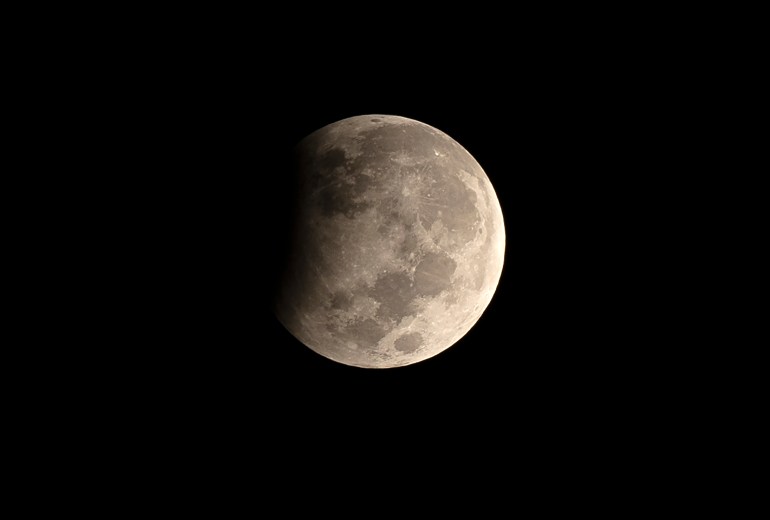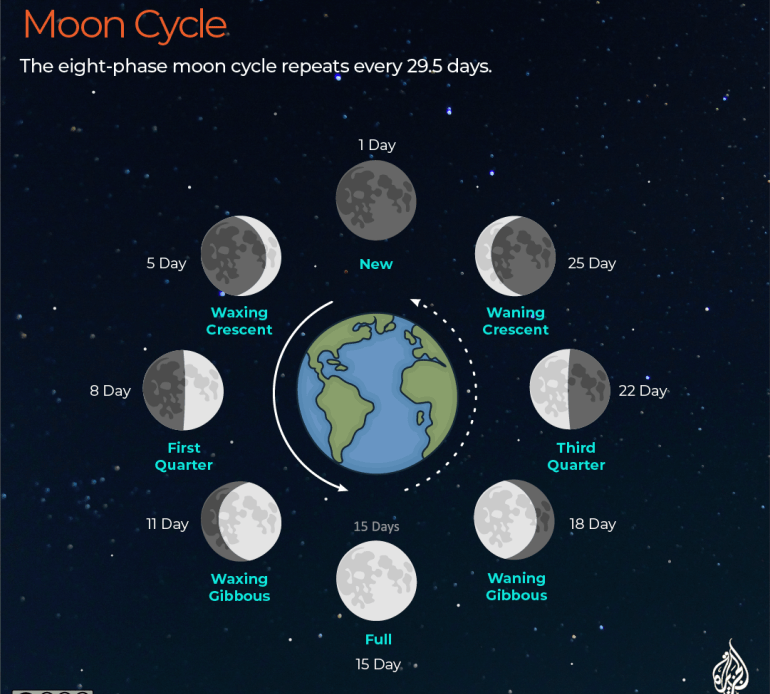On the night of September 17, the Earth, sun and moon will align to create three celestial events.
In many places, depending on the time zones, people will have the opportunity to witness a harvest moon, a supermoon, and a lunar eclipse as the full moon rises.
Here’s what you need to know about these events:
First things first: What is a full moon?
According to NASA, a full moon is defined as the moment when the moon is exactly 180 degrees opposite to the sun. During this time, the sun is almost fully illuminating the Earth’s satellite.
NASA says this month’s full moon will reach its peak on Tuesday, September 17 at 10:35pm EDT (or at 02:35 GMT on Wednesday, September 18).
Full moons generally rise around sunset and set around sunrise. There are eight phases of the moon cycle, which repeats every 29.5 days.
What is a partial lunar eclipse?
A partial lunar eclipse is the time when a fraction of the full moon is covered by the Earth’s shadow.
The shadow expands and then recedes, but never reaches the totality phase. In contrast, during a total lunar eclipse, the Earth’s full shadow completely covers the moon.
The moon will start moving into the Earth’s partial shadow at 8:41pm EDT on Tuesday (00:41 GMT on Wednesday). The initial dimming might be subtle until the upper edge of the moon begins to enter the full shadow at 10:13pm EDT on Tuesday (02:13 GMT on Wednesday).
The eclipse will peak at 10:44pm EDT on Tuesday (02:44 GMT Wednesday), with just the top eight percent of the moon in full shadow.
The moon will exit the full shadow by 11:16pm EDT (03:16 GMT) and will complete its departure from the partial shadow by 12:47am EDT, or 04:47 GMT on Wednesday morning.

What is a supermoon?
This moon will also be a supermoon.
A supermoon is defined as an astronomical phenomenon where a full moon looks larger and brighter than usual. It happens when the full moon occurs at the same time that its orbit is closest to the Earth.
According to NASA, the term “supermoon” was coined by astrologer Richard Nolle in 1979 to describe a full moon that occurs when the moon is “within 90 percent of its closest to Earth.”
In essence, the Earth, moon and sun are all in a line at this point. At the opposite end of the moon sighting spectrum is the micromoon — when the full moon looks especially small and dull because it coincides with the point in the moon’s orbit when it is…

